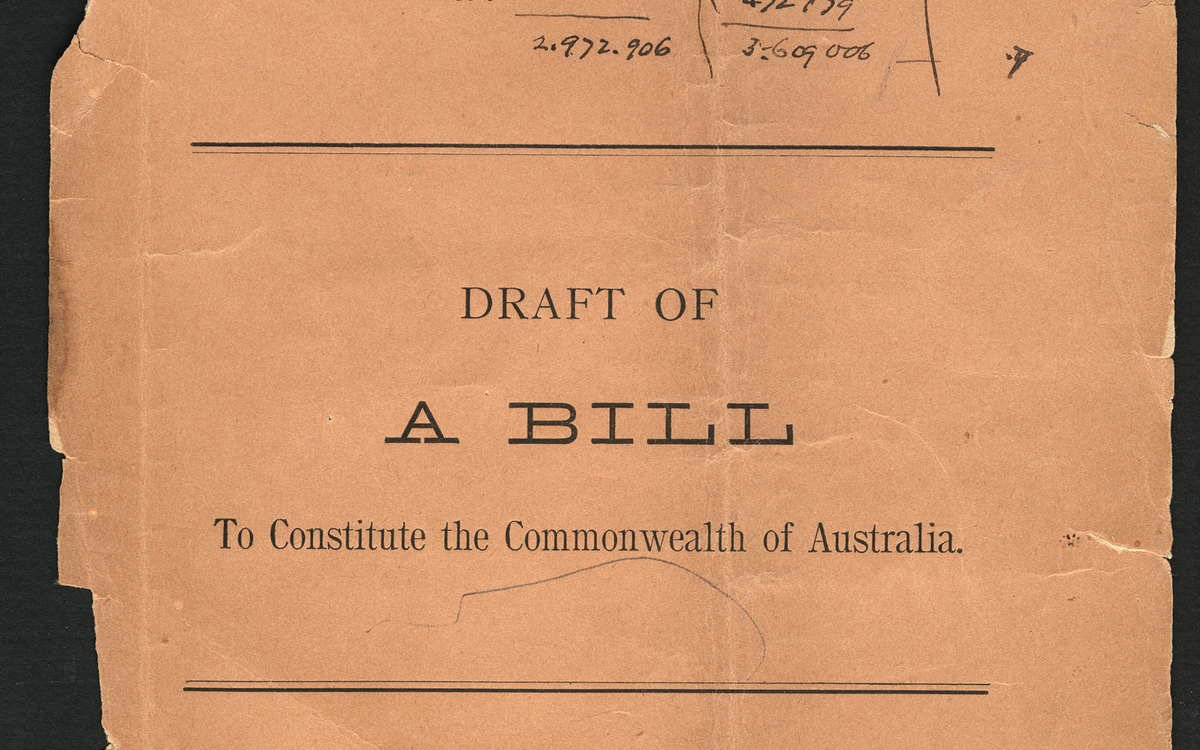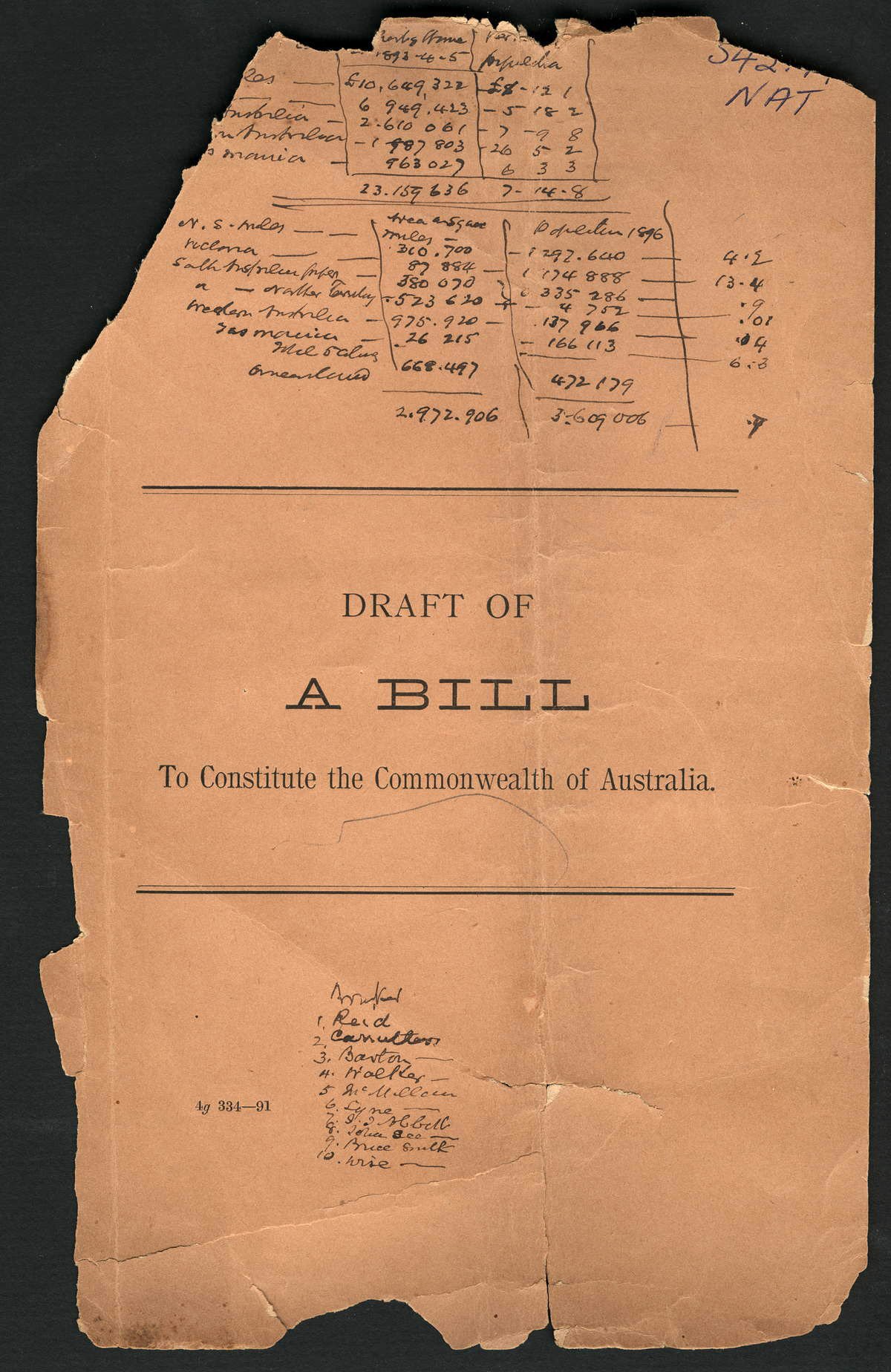The National Library of Australia’s Papers of Sir Edmund Barton is the archive of the first prime minister of Australia, Edmund Barton (1849–1920). Containing personal documents and records, the collection also includes diaries, newspaper cuttings and other items relating to Barton’s private and professional life. One of the more significant items in the collection is a copy of the 1891 Draft of a Bill to Constitute the Commonwealth of Australia. Barton had three copies of this document in his papers; one is more important than the other two because it is annotated with Barton’s handwritten notes.

Barton, Edmund, Sir, 1849-1920. (1827). Papers of Sir Edmund Barton, 1827-1940 [manuscript]. http://nla.gov.au/nla.obj-225140407
Prepare students for the activity that follows by asking them these preparatory questions:
- Who or what decides the laws and rules in our classroom?
- What would our classroom be like if we did not have rules?
- Who or what decides the laws and rules in our society?
- What would our society be like if we did not have established rules and laws?
With your class, brainstorm ideas about what a constitution is. Then provide background information about the forming of the Australian constitution and the need for a document to establish the basis of our democratic society.
1. Show students the online digitised copy of Barton’s constitutional draft bill. Read aloud the opening lines of the preamble (the first paragraph of the draft bill) drawing students’ attention to the words within brackets:
WHEREAS the Australasian colonies of [here name the colonies which have adopted the Constitution] have by [here describe the mode by which the assent of the Colonies has been expressed] agreed to unite in one Federal Commonwealth under the Crown of the United Kingdom of Great Britain and Ireland
Then read the final version of this wording from the Commonwealth of Australia Constitution Act (found on the Australian Parliament House website):
Whereas the people of New South Wales, Victoria, South Australia, Queensland, and Tasmania, humbly relying on the blessing of Almighty God, have agreed to unite in one indissoluble Federal Commonwealth under the Crown of the United Kingdom of Great Britain and Ireland
2. Using a classroom map of Australia, ask students to identify which state is not included in the final preamble. Then divide students into three teams for a 20 minute online or in-library investigation. Ask one team to find out why Western Australia was not included in the list of states, ask another team to determine when the Northern Territory came into being, and ask the third team to explore the reasons for the creation of the Australian Capital Territory. After 20 minutes, the teams can report their findings to the class. (Note: you might like to indicate other parts of the final version of the Constitution that do include Western Australia).
3. Use the following questions to help the class explore the context of Barton’s draft document:
- What makes this item a treasure?
- What important political office did Barton later hold? Who was his successor in that role?
- What important judicial office did Barton later occupy?
- Why would a draft have been an important step in finalising the Australian Constitution?
- The draft constitution bill was annotated by Barton in 1891. How many more years elapsed before Australian Federation?
4. Draw your students’ attention to the handwritten notes on page 12 of Barton’s draft. Barton had earlier made the observation that there could, in the future, be the possibility of a deadlock between the House of Representatives and the Senate. When the Australian Constitution was being drafted, one of the major issues of contention was how to resolve legislative deadlocks between the houses. The result of these concerns is Section 57 of the final constitution. Section 57 has been activated on six occasions since the Constitution came into effect. This activation is called a double dissolution. Ask your students to research the following: Section 57 of the Australian Constitution, the meaning of a double dissolution, and the events of the 1974 double dissolution and the subsequent dismissal of the Whitlam government in 1975.
